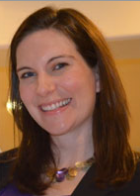Presentation Abstracts
 Digital Tools, Global Audiences, & the Future of Writing Studies
Digital Tools, Global Audiences, & the Future of Writing Studies
Chris Anson, Director of the Campus Writing and Speaking Program at North Carolina State University
Largely because of the rapid spread of digitally-enabled information exchange and social media, students today are writing more than any generation in history. Much of that writing is "vernacular" or "self-sponsored" (Brandt; Roozen), in what James Paul Gee has called "passionate affinity spaces," for audiences beyond academia. Research is now examining the relationships between self-sponsored and academic literacies (Buck; Grabill; Lunsford; Prior and Shipka), but we know little about these relationships across languages and cultures. Meanwhile, technologically-based social media are often publicly criticized for "degrading" normalized forms of acceptable discourse, but these critiques have no basis in research.
This presentation explores the possibilities of self-sponsored communication for the development of multilingual, global literacies. Drawing on examples of posts and exchanges across a range of social media platforms, I raise questions about the tacit learning fostered by cross-cultural Internet communication; the transfer of students' self-sponsored language learning to academic contexts; and the often paradoxical relationships between the quality and nature of self-sponsored literacies and literacies expected or fostered in the classroom. More formalized instructional implications include those of scholars such as Fraiburg, who focuses on multimodality and multilingualism–advocating that teachers might ask native English speakers "to collaborate with speakers of world languages to design and remix texts . . . targeted at a range of local and global audiences," or seek "partnerships with international classrooms and speakers of world languages by having students conduct mini-ethnographies in their own local contexts and cultures and target this research toward international audiences as part of a cross-cultural exchange" (118). These and other kinds of projects suggest new possibilities for the use of digital tools not only to link learners' self-sponsored digital literacies with their academic literacies but to do so in a global context.
 Mapping Transfer and the Role of Peer Review in the Development of Reasoning and Writing Competencies
Mapping Transfer and the Role of Peer Review in the Development of Reasoning and Writing Competencies
Valerie Ross, Director, Critical Writing Program, Center for Programs in Contemporary Writing at the University of Pennsylvania
This presentation describes some recent developments and key findings in knowledge transfer research, and explore how peer review can be used to cultivate transferable writing skills in first and second language learners. Our two ongoing studies, one a longitudinal study of transfer and the other a study of peer review, were generated in part by the unexpectedly strong peer review culture that has resulted from training our students in peer review techniques that students continue to use long after completing their writing seminars. Our findings, based on mixed methods research, including surveys, interviews, assessment data, writing analysis, videotaping, and coding with NVivo, point to how peer review techniques advance students' social and cognitive engagement with writing, kindling a drive to acquire and exchange knowledge in rhetoric as well as in the subject at hand, spurring critical thinking, and accelerating the apprentice writer's metacognitive understanding of the complex social activities and knowledge that writing demands.
Statistical, Predictive, and Discourse Analysis of 78,000 Peer Reviews


Joseph Moxley, Director of First-Year Composition at the University of South Florida
David A. Eubanks, Associate Dean of Faculty for Institutional Research and Assessment at Eckerd College
Alaina Tackitt, Doctoral Candidate in Rhetoric and Composition at USF
 This study examines the efficacy of using a community rubric across contexts to measure the development of undergraduate student writing and critical thinking. We analyze eight traits from basic skills to complex reasoning as assessed by instructors to question the effectiveness of our process-based, two-term, writing courses in a first-year composition program at a large, state university in the United States. Evaluating a corpus of 52,001 intermediate and final essays from 7,722 students spanning 2 courses, 7 terms, 3 years, and over 482 sections as scored by 128 instructors using a single, analytic rubric, we derive a model of development--accounting for the joint effects of student competency, learning rate, and instructor bias on student development--that provides strong evidence of predictive validity for ratings. The largest quantitative study to date on cognitive, writing, and transfer competencies in a university writing program, our results affirm our pedagogy and confirm the use of our cross-context community rubric while establishing that a rater culture and context affect instructor scoring and rubric interpretation. Although we find evidence that student development transfers, our results raise questions regarding ways a quality-based community rubric and traditional grading practices may restrain student development.
This study examines the efficacy of using a community rubric across contexts to measure the development of undergraduate student writing and critical thinking. We analyze eight traits from basic skills to complex reasoning as assessed by instructors to question the effectiveness of our process-based, two-term, writing courses in a first-year composition program at a large, state university in the United States. Evaluating a corpus of 52,001 intermediate and final essays from 7,722 students spanning 2 courses, 7 terms, 3 years, and over 482 sections as scored by 128 instructors using a single, analytic rubric, we derive a model of development--accounting for the joint effects of student competency, learning rate, and instructor bias on student development--that provides strong evidence of predictive validity for ratings. The largest quantitative study to date on cognitive, writing, and transfer competencies in a university writing program, our results affirm our pedagogy and confirm the use of our cross-context community rubric while establishing that a rater culture and context affect instructor scoring and rubric interpretation. Although we find evidence that student development transfers, our results raise questions regarding ways a quality-based community rubric and traditional grading practices may restrain student development.
 Tools, Vision, and Design for the 21st Century Classroom
Tools, Vision, and Design for the 21st Century Classroom
Suzanne Lane, Director of the Writing, Rhetoric, and Professional Communication (WRAP) program at the Massachusetts Institute of Technology
Based on her work developing Annotation Studio, NORA (a paraphrasing tool), and MITx features, Suzanne Lane talks about pedagogy in online and flipped classroom spaces. Most of the discussion about the relation between writing and online education has focused on how to assess writing; relatively little discussion, funding, or research has been dedicated to exploring the affordances of online platforms for robust instruction in writing. This presentation describes a number of digital tools developed at MIT for teaching analytical reading, source use, paraphrase, genre and discourse analysis, and logical structure, and discusses the process of design for digital Humanities instructional platforms.
 Empirical Research Traditions, Big Data, and Writing Studies: Interconnections and Transformations
Empirical Research Traditions, Big Data, and Writing Studies: Interconnections and Transformations
Christiane K. Donahue, Director, Institute for Writing and Rhetoric at Dartmouth University
This presentation explores the relationships among traditional empirical research about writing, in its quantitative forms, "big data" research, and analytics. We begin by considering some examples of European and U.S. studies of writing using quantitative analyses (longitudinal, contrastive, or corpus-based, carried out with coding by hand or with analytic software, as well as keystroke logging and eye-tracking research). We then trace the ways in which that work connects to, prepares us for, and forecasts "big data" and analytics research in writing studies. Our interest is in how the traditional research and big data research might intersect, interact, or complement each other, in particular in writing scholars' longstanding search for understanding what writing knowledge is and how writers adapt, transform, and repurpose it across contexts.
 The Takeaway: A Workshop for Moving From Talk to Action
The Takeaway: A Workshop for Moving From Talk to Action
Kate Pantelides, Associate Director of First-Year Writing at Eastern Michigan University
We've learned about digital tools for approaching, responding to, and assessing writing. We've considered best practices for fostering global citizenship and drawing on student writing in affinity spaces. We're eager to implement change and new initiatives in our own research programs and writing spaces. But, now what? Considering all of the tools introduced, where do we go from here? How do such research projects and initiatives begin? In this final workshop, Kate Pantelides draws on the work of colloquium speakers as well as her own experiences getting started to facilitate tangible beginnings for colloquium participants. As a group, we consider questions that address how to appropriately balance the needs of a diverse student body, the constraints of institutions, and the requirements for responsible program and research project development.